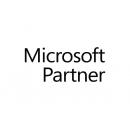DOES YOUR BUSINESS FALL
UNDER THE SCOPE OF THE NIS DIRECTIVE 2
⇒ What Is NIS Directive 2
- "NIS Directive," which stands for the Network and Information Systems Directive.
- The NIS Directive is a cybersecurity law that was introduced by the European Union (EU) in 2016. Its main goal is to ensure a high common level of cybersecurity across the EU by imposing cybersecurity obligations on operators of essential services (such as energy, transport, banking, and healthcare) and on digital service providers (such as online marketplaces, cloud computing services, and search engines).
- The NIS Directive requires these operators and providers to take measures to manage the risks posed to the security of their network and information systems, to report any significant cybersecurity incidents to national authorities, and to cooperate with those authorities in responding to such incidents.
- The NIS Directive also established a network of national authorities (known as the Cooperation Group) to share information and coordinate their actions on cybersecurity issues. In addition, it requires member states to adopt national cybersecurity strategies and to designate national authorities responsible for overseeing the implementation of the Directive.

⇒ Does Your Business Fall Under The Scope Of The NIS Directive 2
With fines of up to €10 million or 2% of a company's annual turnover, the NIS 2 directive aims to enforce a move to a higher level of cyber protection, eliminate differences in national cyber security requirements, and in the implementation of cyber security measures in the different member states.
⇒ Improved Risk And Incident Management And Closer Collaboration According to NIS Directive 2
- The NIS Directive 2 (Network and Information Systems Directive 2) is a European Union directive aimed at enhancing the cybersecurity of critical infrastructure providers and digital service providers. The directive requires Member States to implement measures that ensure that essential services remain secure and operational during a cyber incident.
- One of the key requirements of the NIS Directive 2 is for critical infrastructure providers and digital service providers to improve their risk and incident management capabilities. This involves establishing incident response plans, conducting risk assessments, and developing measures to prevent, detect, and respond to cyber incidents.
- Additionally, the directive encourages closer collaboration between critical infrastructure providers, digital service providers, and national authorities responsible for cybersecurity. This collaboration can take the form of sharing threat intelligence, best practices, and lessons learned from past cyber incidents. The directive also requires providers to report significant cyber incidents to the relevant authorities.
- By improving risk and incident management and promoting closer collaboration, the NIS Directive 2 aims to enhance the overall resilience of critical infrastructure and digital services in the face of cyber threats.

⇒ Advanced Vision IT Ltd Cybersecurity Products & Software
To build good cybersecurity protection, you need physical products and software that will help strengthen your network against attacks. If you want to view some of the ADVANCED VISION IT's cyber protection solutions, click on the links below.
- Endpoint security and antivirus software - offer a centralized management system from which security administrators can monitor, protect, and investigate vulnerabilities across all endpoints, including computers, mobile devices, servers, and connected devices. Antivirus software helps keep a computer system healthy and free of viruses and other types of malware.
- Employee Monitoring Solution - Employee monitoring solutions are software tools that enable employers to monitor the activities of their employees while they are at work. These solutions can be used to track employees' computer usage, including their internet browsing history, email communication, keystrokes, and application usage.
- Cybersecurity Backup - A backup is a copy of the system or network's data for file restoration or archival purposes. Backups are an essential part of a continuity of operations plan as they allow for data protection and recovery.
- Еmail Protection - refers to technology designed to prevent, detect and respond to cyber-attacks delivered through email. The term covers everything from gateways email systems to user behavior to related support services and security tools.
- Password Vault Manager - A password vault, password manager, or password locker is a program that stores usernames and passwords for multiple applications securely and in an encrypted format. Users can access the vault via a single “master” password.
- Vulnerability Assessment & Patch Management - The main difference between patch management and vulnerability management is that patch management is the operational process of applying remediations (patches) to vulnerable systems. Vulnerability management is the process of identifying, scanning, and prioritizing vulnerabilities for remediation.
- Data loss prevention (DLP) - makes sure that users do not send sensitive or critical information outside the corporate network.
- Cloud Security- Cloud security is a collection of security measures designed to protect cloud-based infrastructure, applications, and data. These measures ensure user and device authentication, data and resource access control, and data privacy protection.
- Next-Generation Firewall - protects your network by filtering traffic and acting as a guard between your internal network and the rest of the world. Without a Firewall, your business systems could be left wide open and vulnerable to attack. It also serves as another protective layer to block malicious software.
- Active Directory Security and Recovery are critical components of any organization's cybersecurity strategy. Here are some key steps that can be taken to secure and recover Active Directory.
- SIEM & SOAR - SIEM (Security Information and Event Management) and SOAR (Security Orchestration, Automation, and Response) are both tools used in cybersecurity to monitor and respond to security threats.
CONTACT OUR TEAM OF PROFESSIONALS FOR A COMPLETELY FREE CONSULTATION
CLAIM YOUR FREE IT AUDIT & CONSULTATION SCHEDULE A CALL WITH OUR TEAM























